Assessing Motility Problems
Assessing motility problems with manometry and other diagnostic tests
By Professor Anthony Hobson PhD
Achalasia is a primary oesophageal motility disorder of uncertain aetiology which is characterised by swallowing difficulty (dysphagia) and can manifest in different presentations dependent mainly on the longevity of the disease. Until around 10-years ago, achalasia was seen as a single entity and treatment was fairly uniform in terms of dilatation and myotomy. Whilst imaging techniques such as a barium swallow can be used to show some characteristics of an achalasia diagnosis the advent of high resolution oesophageal manometry has led to an ability to sub classify different types of achalasia which has then enabled the outcomes of different treatments to be assessed more objectively. This work has shown that there are three main sub types of Achalasia and that these sub-types respond better to certain treatments. The following piece gives a short overview of the technique of oesophageal manometry, describes the three sub-types of achalasia and briefly outlines which treatments appear to be more effective in each sub type.
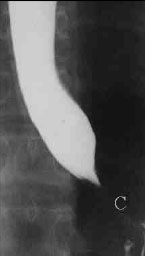
High resolution oesophageal manometry (HRM)
Manometry simply means the measurement of pressure within an organ. HRM probes or catheters typically have around 30 pressure sensors placed along a 3-4mm diameter tube at 1cm intervals. The tube is placed via the nose (usually after a spray of local anaesthetic in the nose an / or throat) into the oesophagus with the help of a few sips of water. Below is a link to a video of the intubation method.
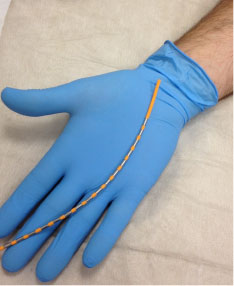
Once the probe is positioned then small sips of water are given to assess the pattern of oesophageal motility and peristalsis. Next is an image of a normally propagated swallow contraction which moves contents along the oesophageal body, through the lower oesophageal sphincter and into the stomach. Whilst this is quite straight forward in most cases sometimes it is difficult to pass the probe through the tight lower oesophageal sphincter with failure rates being around 10% in our laboratory.
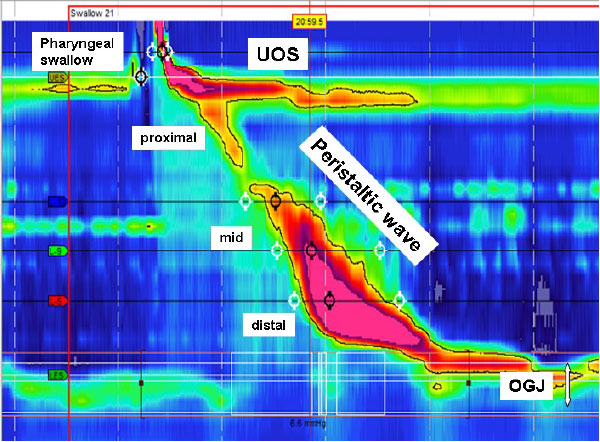
This image shows an colour plot of normal oesophageal peristalsis with warmer colours representing higher pressures and cooler colours representing lower pressures. When the swallow is initiated the lower oesophageal sphincter relaxes allowing the swallowed bolus to move into the stomach and the remaining oesophageal contents are cleared by a peristaltic wave which moves from top to bottom ‘stripping’ the remaining oesophageal contents.
In achalasia there is an absence of normal peristalsis and incomplete relaxation of the lower oesophageal sphincter (LOS). Type I achalasia is probably reflective of long standing achalasia as it is associated with a dilated oesophageal body, poorly relaxing LOS and very little oesophageal body pressurisation upon swallowing (because of the ‘baggy’ oesophagus).
Type I Achalasia
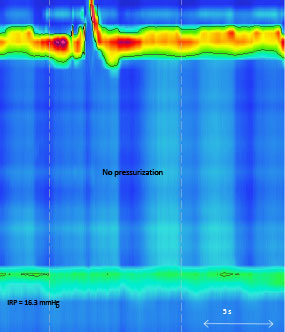
Type I achalasia requires reduction in the pressure of the lower oesophageal sphincter either by dilatation (stretching with a balloon during endoscopy) or by myotomy (cutting the muscles) so that swallowed material can better clear along the oesophageal body. Because there is little pressure in the oesophageal body and the oesophagus is dilated then these interventions can often be less effective than in other types of Achalasia.
Type II Achalasia
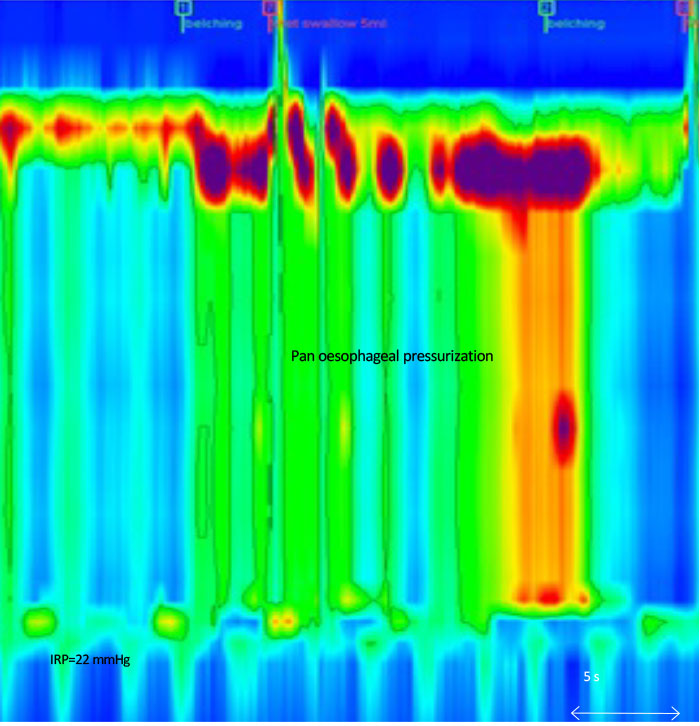
Type III Achalasia
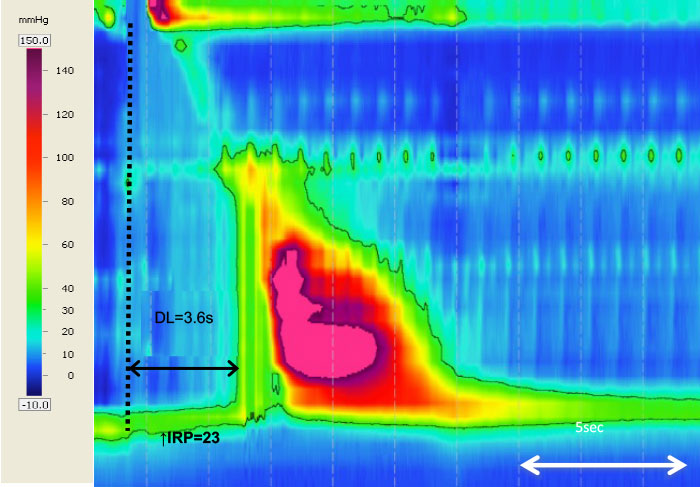
Summary
High Resolution Oesophageal Manometry (HRM) is a safe and well tolerated procedure which is hugely important in sub-classifying different types of achalasia which can then guide the clinician to the best and most effective type of therapy. HRM is fairly widely available throughout the UK in the NHS and private sectors. When patients with dysphagia present in primary care they should be referred to secondary care for an urgent gastroscopy to rule out conditions such as oesophageal cancer. In the absence of oesophageal cancer further testing with a barium swallow and HRM to confirm the diagnosis.
